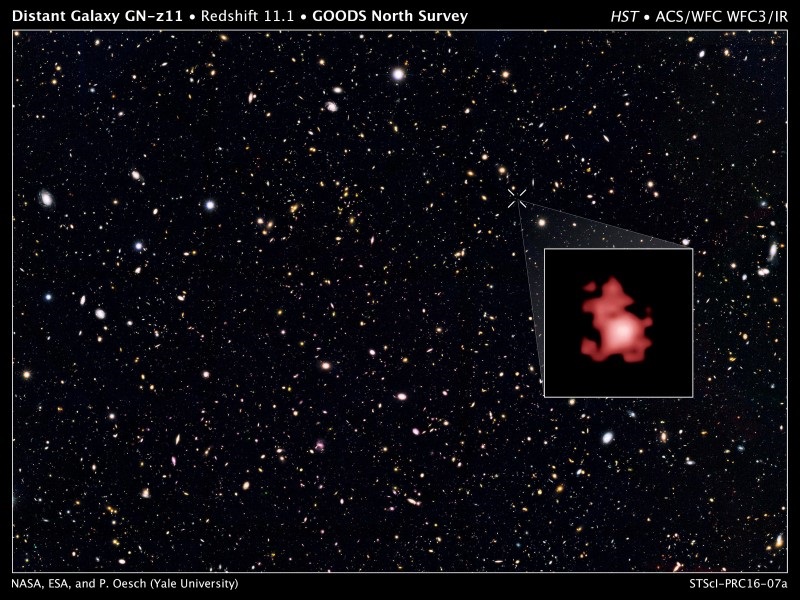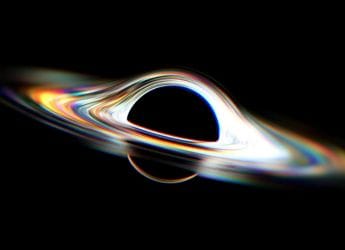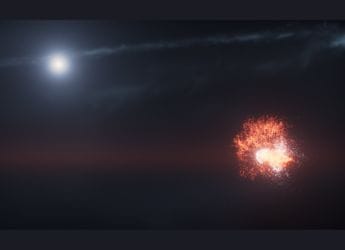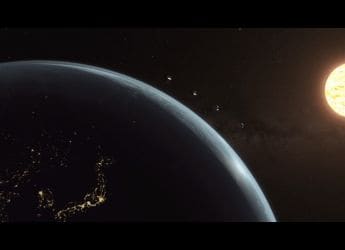- Home
- Science
- Science News
- Hubble Telescope's Latest Find Pushes Back Clock on Galaxy Formation
Hubble Telescope's Latest Find Pushes Back Clock on Galaxy Formation

Located a record 13.4 billion light-years from Earth in the direction of the constellation Ursa Major, the galaxy, named GN-z11, was first spotted two years ago in a Hubble Space Telescope deep-sky visible light survey.
At the time, astronomers knew they were seeing something very far away, possibly as distant as 13.2 billion light-years from Earth.
Follow-up observations with an instrument on Hubble that splits light into its component wavelengths revealed that GN-z11 was farther away than initially believed, setting back the galaxy-formation clock by another 200 million years.
Being able to use Hubble to peg the galaxy's distance was a surprise, said astronomers who will publish their research in next week's issue of The Astrophysical Journal.
"We've taken a major step back in time, beyond what we'd ever expected to be able to do with Hubble," Yale University astronomer Pascal Oesch said in a statement.
The key to the discovery was precisely measuring the shift of the galaxy's light into longer, redder wavelengths, which directly corresponds to how far the photons had traveled before reaching Hubble's eye.
The phenomenon is similar to the sound of a train whistle shifting pitch as it recedes into the distance.
Though small by modern galaxy standards, GN-z11 is huge considering it formed at a time when the universe was only 3 percent of its present age, said astronomer Garth Illingworth with the University of California, Santa Cruz.
"We're seeing this galaxy in its infancy," Illingworth said. "It's amazing that a galaxy so massive existed only 200 million to 300 million years after the very first stars started to form."
GN-z11 contains about 1 billion times the mass of the sun. The galaxy is about 25 times smaller than the Milky Way, though it is pumping out new stars 20 times faster than the present Milky Way.
Astronomers said they expected the new distance record to stand until Hubble's successor, the James Webb Space Telescope, is launched in 2018.
© Thomson Reuters 2016
Get your daily dose of tech news, reviews, and insights, in under 80 characters on Gadgets 360 Turbo. Connect with fellow tech lovers on our Forum. Follow us on X, Facebook, WhatsApp, Threads and Google News for instant updates. Catch all the action on our YouTube channel.
- Samsung Galaxy Unpacked 2025
- ChatGPT
- Redmi Note 14 Pro+
- iPhone 16
- Apple Vision Pro
- Oneplus 12
- OnePlus Nord CE 3 Lite 5G
- iPhone 13
- Xiaomi 14 Pro
- Oppo Find N3
- Tecno Spark Go (2023)
- Realme V30
- Best Phones Under 25000
- Samsung Galaxy S24 Series
- Cryptocurrency
- iQoo 12
- Samsung Galaxy S24 Ultra
- Giottus
- Samsung Galaxy Z Flip 5
- Apple 'Scary Fast'
- Housefull 5
- GoPro Hero 12 Black Review
- Invincible Season 2
- JioGlass
- HD Ready TV
- Laptop Under 50000
- Smartwatch Under 10000
- Latest Mobile Phones
- Compare Phones
- OnePlus 15R
- Realme Narzo 90x 5G
- Realme Narzo 90 5G
- Vivo S50 Pro Mini
- Vivo S50
- OPPO Reno 15c
- Redmi Note 15 5G
- Redmi Note 15 Pro 5G
- Asus ProArt P16
- MacBook Pro 14-inch (M5, 2025)
- Infinix Xpad Edge
- OnePlus Pad Go 2
- OnePlus Watch Lite
- Just Corseca Skywatch Pro
- Acerpure Nitro Z Series 100-inch QLED TV
- Samsung 43 Inch LED Ultra HD (4K) Smart TV (UA43UE81AFULXL)
- Asus ROG Ally
- Nintendo Switch Lite
- Haier 1.6 Ton 5 Star Inverter Split AC (HSU19G-MZAID5BN-INV)
- Haier 1.6 Ton 5 Star Inverter Split AC (HSU19G-MZAIM5BN-INV)












